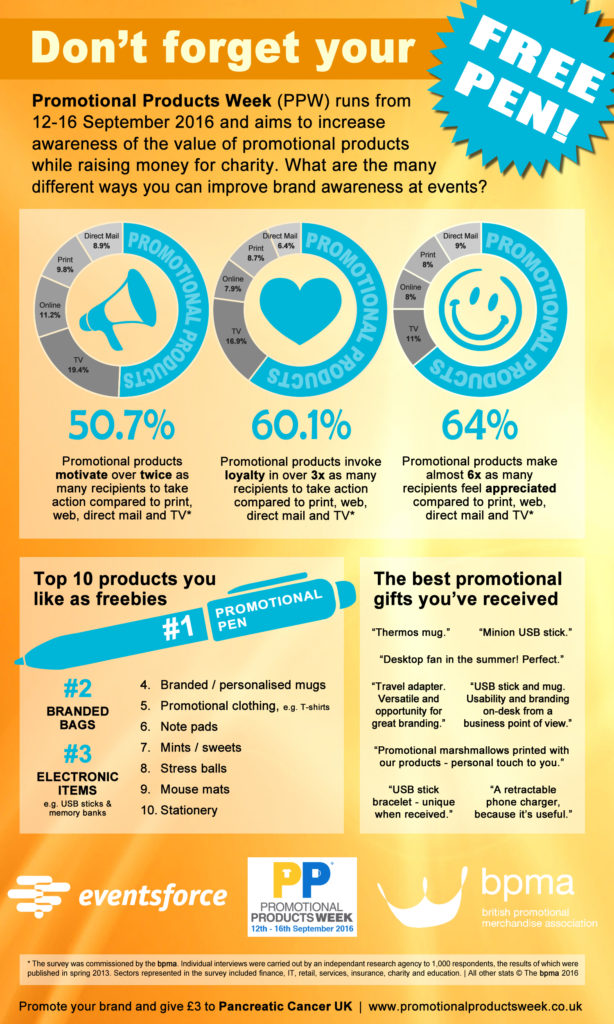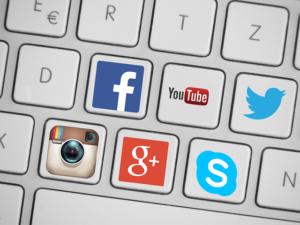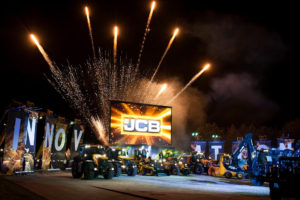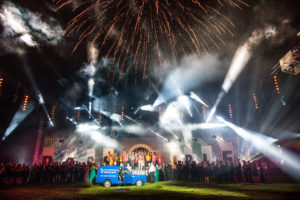 While many event planners work independently, and with great success, it’s important to understand the value of a well-formed functional team. Big event planning projects are often done in teams because this is the most efficient, stress-free and collaborative way of working. A team member should be empowered, trusted and respected enough to work on their own under a common goal and then brought together to bask in the mutual success of the team.
While many event planners work independently, and with great success, it’s important to understand the value of a well-formed functional team. Big event planning projects are often done in teams because this is the most efficient, stress-free and collaborative way of working. A team member should be empowered, trusted and respected enough to work on their own under a common goal and then brought together to bask in the mutual success of the team.
Related read: How to build the right team for a hybrid event
Team work is not only beneficial to individuals (if you can’t learn something from someone, you aren’t looking hard enough!). But by adding more staff to your team – all working independently – you will also grow your business.
Here are 20 reasons why it’s good to work as a team in the world of events:
1. Helps Problem Solving
Team work promotes innovation and ideas sharing. A problem shared is a problem halved, or so the saying goes. Using the problem solving abilities of a small team doesn’t just resolve issues faster but can also lead to avoiding them again in the future.
2. Encourages Initiative
Taking initiative is a key ingredient for solving problems, dealing with change, and providing customers with service that far exceeds expectations. With the encouragement of a proactive leader, encouraging initiative can make for a healthy team as it’s essentially assuming risk for a possible failure. The only alternative to putting yourself out there when things go wrong is doing nothing at all and who wants a colleague who does that?
3. Reduces Stress
Being able to delegate work when your to-do list is longer than your arm will reduce a lot of pressure on event planners. When there are tight – and often competing – deadlines to hit, stress levels can be greatly elevated but being able to share the responsibility can be a load off the shoulders.
Read: 10 Signs Event Planning is Burning You Out
4. More Self-Awareness
Self-awareness is being conscious of what you’re good at while acknowledging what you still have yet to learn. By working in a team you are constantly learning from others and being aware of any gaps in the knowledge or skills you already have. Self-awareness of your strengths and weaknesses can net you the trust of others and increase your credibility.
Read: Top 7 Personality Traits of a Great Event Manager
5. Promotes Learning
As much as you’d like to, you don’t know everything about everything. Event planning involves combining the differing goals of several departments as well as the requirements of the delegates which can all be incredibly complex. You are not an expert in every department so learning from those who are is vital.
6. Work to Your Own Schedule
Few people are both a night owl and an early bird. Event planning can require both attributes whether it’s getting up early for an office meeting or staying late to finalise details the night before your big event. Working in a team allows people to play to their strengths as you never know when the tyre will bust on your event. Knowing someone is there will bring comfort to individuals – as a team, your event planning can still be progressing even while you’re taking a well-earned nap. An empowered team can function just as flexibly as an individual doing it alone.
7. Meet Shorter Deadlines
If you have to put an event together at extremely short notice, then you need a team behind you for support. Working with a few trustworthy, reliable and resourceful individuals with broad expert knowledge – not simply skills enlargement but skills enrichment – can mean quick turnaround on decisions, rapid problem solving and being able to meet shorter targets or deadlines by delegating and saving time.
Read: 8 Time-Wasting Habits Event Planners Should Quit
8. Work from Anywhere
Most companies now accept remote working so why should event profs be any different? Everyone has access to WiFi so you don’t need to be in the same room as your team. One member could be checking the venue capabilities, while another is at the office of a potential guest speaker. And this doesn’t prevent you from being in contact with your team. Location isn’t a great priority and things don’t need to be communicated in person as having to attend overly-frequent catch-up meetings can be counter-productive to the workflow of the team. Productivity apps such as Trello, Jira and Asana which are designed to empower team collaboration have solved these problems. They also improve efficiency and project management, so who needs to be in the same room at the same time every day?
9. Great for Introverts
Introvert abilities such as engaged listening and deep rumination are useful skills to have particularly in event planning and management. It’s good to encourage introverts to be involved in your team – they tend to communicate using concrete facts, which, when expressed correctly, might help lend objectivity to emotional or tense situations. By encouraging a flexible working environment, you can reduce anxiety levels and bring in new ideas because they will be able to work on their own but will still be in constant contact with the rest of the team.
10. Avoids Arguments
By encouraging problem solving and collaboration, working in a team can avoid arguments that may arise along the way. The array of different personalities, planning styles and opinions that a team can bring shouldn’t be navigated with caution but embraced – the trick is to challenge the idea, not the person. A respectful robust challenge to an idea from a passionate colleague is highly preferably to the end game of the business than the isolated view of a megalomaniac. No-one wants to be the person who does the same stuff they are familiar with as they didn’t have the self-worth to reach out for a different view for fear of a disagreement. Even a two-year-old can play as part of a group; professional event planners can too or ask themselves why not.
11. Makes Your Event Unique
By combining the knowledge and expertise of several members of a team will ensure that each event is unique but it also defines your company. Not everyone shares the same passions and tastes so it’s important to consider what others might require from your event rather than just relying on your own likes and dislikes. By working in a team you can create a brand with themes and ideas that represent your diversity and cooperation which translates into future events and builds a strong event identity.
12. Boosts Productivity
Working in a small team can promote day-to-day productivity by playing to strengths and abilities. Everyone has their own area of expertise so they will be able to work independently, with fewer distractions and reduced stress as they will be in their familiar environment. As long as you keep communication active and up-to-date, then organisation shouldn’t be an issue when planning an event.
13. Great for Fixing Mistakes
The difference between outstanding world class companies and average performers is how well they react to problems when they arise. And, more importantly, how well these problems are dealt with and how quickly. The more eyes you have working on a project, the more likely it is to spot these problems in a timely manner and fix them with minimal confusion.
Read: How to Handle a Big Crisis at Your Events
14. Takes The Pressure Off
Knowing that a colleague has your back – as you have theirs – brings comfort in itself. Having someone else understand what you are going through – even if they can’t directly help, but are simply with you – can lead to very unusual, lasting friendships. Although people have different ways of working – some like to get things out of the way as quickly as possible while other take time to mull things over – an individual’s approach to a task is secondary to the task itself. Working in a team might mean you’re working at a pace that is unnatural for you. But with an empowered team sharing transparent goals to defined deadlines, all pulling in the same direction, individuals can work within their remit at a time, pace and location that best suits them. This can be a tough adjustment for a new team player but the reality is, the method an individual takes is largely irrelevant. As long as it’s respectful, ethical and can be made transparent, focus on the output and celebrate diverse personalities and ways of working. Different is OK, it’s 2019!
Read: 8 Steps to Well-Being for Event Planners
15. Boosts Career Prospects
Showing that you can work as part of a team is vital to most employers. While showing you can do a lot yourself may make things more cost-effective, being stressed and struggling to hit deadlines is not going to save money in the long run. Working as a team broadens your range of skills from deepening your understanding of a particular subject area via practical activities to developing interpersonal, leadership and motivational skills. You will be more aware of strengths and weaknesses that will be invaluable when looking to further your career. Working in a team also gives employees a greater sense of belonging and of recognition, which helps them take more pride in their work, and their company.
16. Fewer Restrictions
Working in a team provides fewer restrictions rather than being limited by your individual skills, knowledge and time. A team gives you access to an enriched source of knowledge, skills, experience, laughter and, of course, the odd celebratory pint. Working alone, you only have yourself to blame if things don’t go quite right. This keeps things on your shoulders rather than being supported, advised and coached by others around you.
17. Full Credit
It’s great to collaborate. Period. Sometimes credit may not always be fairly distributed, but team players focus on achieving the end goal and being rewarded rather than elbowing others for individual recognition. Working on your own can highlight your great work but it would also highlight the mistakes you make. It may also indicate insecurity in asking others for help.
18. Fewer Misunderstandings
You may have all the information. You may be able to make informed decisions and choices yourself with all of the knowledge to hand. However, if you can’t convince your team to try something new around your event, are you likely to succeed in convincing a skeptical delegate? There might be an inclination to follow your gut decisions when working alone but remember: there was once an executive at Decca Records who had a gut decision to reject The Beatles when he first heard them.
19. Stronger Bond with your Client
Working alone means that all communication has to come through you – this includes having to build a close bond with the client and, essentially, being at their beck and call. While you’re trying to juggle every aspect of planning and management, you might also be trying to deal with emails every 10 minutes asking for constant updates, changes to minute details or any other manner of insignificant contact that will distract you from the really important stuff. And what about the other events you may be working on? What about other clients who wish to talk to you today? Clients rarely arrange their annual calendar conveniently around the diary of their favourite loner event planner.
20. Challenge Yourself
Working alongside colleagues doesn’t mean sitting back and allowing people to take the lead on certain tasks on occasions. Team players spot learning opportunities from experienced colleagues and pay attention without risking the event. The challenge is about playing to strengths, understanding your own abilities and learning from others. Working on your own can make you blinkered and dated, but pushing yourself in a team environment is the real challenge with the best individual and collective outcome.
In Conclusion
The event industry is made up of many freelancers and individuals with experience in niche areas and those who create “event magic” as part of a well-rounded, agile, fast-paced team. Modern day, dynamic events are complex machines that require a multitude of cogs all working together to get a result. One wheel falling off is unacceptable but if you trust them, then there’s always a solution if you appreciate the value of a well-formed functional team.
Did you know that your team members can be one of your greatest weaknesses when it comes to data security and the chances of breach? Find out what you can to STOP your attendee data from getting compromised by getting your copy of ‘The Event Planner’s Guide to Data Security in a Post-GDPR World‘.

 After 11 days of competition across more than 20 sport disciplines, the Paralympics games came to an end this month with a celebration of 500 medal-winning athletes. Despite all the controversy around poor ticket sales (only 12% of tickets were reportedly sold just three weeks prior to the games), organisers still managed to sell more than 64% of the 2.5 million tickets as the curtains rose on the night of the opening ceremony. The success, of course, was not just limited to the stands. The class of 2016 ran faster, jumped higher and finished stronger than a lot of their predecessors in both London and Beijing.
After 11 days of competition across more than 20 sport disciplines, the Paralympics games came to an end this month with a celebration of 500 medal-winning athletes. Despite all the controversy around poor ticket sales (only 12% of tickets were reportedly sold just three weeks prior to the games), organisers still managed to sell more than 64% of the 2.5 million tickets as the curtains rose on the night of the opening ceremony. The success, of course, was not just limited to the stands. The class of 2016 ran faster, jumped higher and finished stronger than a lot of their predecessors in both London and Beijing.

 Despite living in a digital age it seems that we just can’t get enough of a free pen. New research from the British Promotional Merchandise Association (bpma) shows that the number one product people in the UK like to take home as a freebie is a promotional pen. However, promotional products are often seen as an afterthought rather than an integral part of a marketing campaign.
Despite living in a digital age it seems that we just can’t get enough of a free pen. New research from the British Promotional Merchandise Association (bpma) shows that the number one product people in the UK like to take home as a freebie is a promotional pen. However, promotional products are often seen as an afterthought rather than an integral part of a marketing campaign.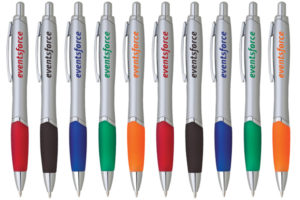 If you want your brand to be remembered then you might need to think outside the box. Last year, almost £1bn was spent by companies on promotional merchandise with an average spend of £5 per item. Gordon Glenister, Director General of the bmpa, told Eventsforce: “Promotional products are one the most powerful advertising mediums in existence. When a branded giveaway is relevant to the organisation and is useful, recipients will keep it on average for almost three years.” The more unusual items people have received includes plants, ice creams and shoe polish while the more praised items mentioned in the research were retractable phone chargers, desktop fans and travel adapters.
If you want your brand to be remembered then you might need to think outside the box. Last year, almost £1bn was spent by companies on promotional merchandise with an average spend of £5 per item. Gordon Glenister, Director General of the bmpa, told Eventsforce: “Promotional products are one the most powerful advertising mediums in existence. When a branded giveaway is relevant to the organisation and is useful, recipients will keep it on average for almost three years.” The more unusual items people have received includes plants, ice creams and shoe polish while the more praised items mentioned in the research were retractable phone chargers, desktop fans and travel adapters.